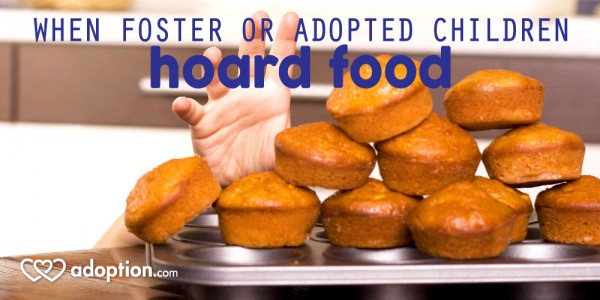Our twin sons came to us just before their third birthday. They were small for their age and thin, but not dangerously so. On the surface, they seemed to have good appetites and were so happy when they got to eat cereal on the first morning they were home with us.
It quickly became clear, though, that food would be a real challenge.
The first issue we saw with food was that they seemed to be comfortable with eating very few foods–namely cereal, happy meals, and candy–and would refuse most things that were too unfamiliar.
After a few days, we discovered that they were hoarding.
We found half-eaten apples and granola bars under their pillows, balled-up sandwich leftovers in the pockets of their shorts and under their beds. Once, I found a pile of half-rotten food in the very back of the closet.
In addition to the hoarding, when given something they were comfortable with, they would want to eat until they nearly made themselves sick.
There were times that our sons would wake in the middle of the night (they also had very irregular sleeping schedules) and binge eat. Having spent much of their toddlerhood under loose supervision, they had become dangerously adept at getting over safety gates, past doorknob covers and child-locked cupboards, and into just about anything without even waking us. The strict safety requirements for foster homes started to make perfect sense; of course, any potentially harmful substances were stored under lock and key.
But that didn’t change the fact that we worried. Two toddlers going through a box of 24 granola bars or a whole bunch of bananas at 3 o’clock in the morning, and then hiding the evidence along with any other food they could access, just wasn’t safe or healthy. This wasn’t misbehaving; it was something they had learned, at two years old, as a tactic for survival. We longed for them to understand that sneaking or hiding food wasn’t necessary.
Problems with feeding and food insecurity are not uncommon in foster care and adoption. I remembered that in our foster parent classes, our trainers went over the fact that often children in neglectful situations eat a diet consisting of primarily convenience foods, and very little fresh or home-prepared meals. We went over hoarding and binge eating as a result of a child not knowing when food would next be available to them, and refusal to eat as a method to gain back control in situation where they have very little. At the time, having never parented before, I sort of vaguely thought that these things seemed easy enough to remedy. “Just make sure they don’t take food from the table,” I thought, or “As soon as they see that there’s plenty of food, they’ll be fine.”
Of course, the reality of actual children who have a history of trauma hysterically begging for cereal, or keeping a pile of spoiling food hidden in their room, is quite different from the hypotheticals given in a training manual. Not that this information wasn’t helpful–in fact, it was invaluable–but we realized that, because our sons had been faced with so many frightening changes in such a short span, completely overhauling their diet in a day wasn’t a healthy approach for them. The challenge was making sure they felt secure in the knowledge that we would continue to provide food, while gently discouraging an obsession with food and preference for unhealthy foods that could follow them into adulthood.
Experiencing erratic feeding schedules and a limited supply of both food and food choices for the first three years of life meant that simply explaining that there would always be more wasn’t enough. While we did reassure them verbally between each meal and snack, we were also sure to offer at least a small amount of food more frequently than we might have otherwise, helping give our reassurances credibility. This not only helped with their feeding issues, but also with their attachment to us as their caretakers–because they were so young, quick follow-through with promises was key to building trust.
Snacks were packed when we left the house, even for short errands when I knew we wouldn’t likely eat them, simply so that they didn’t worry. We also tried to offer two acceptable options whenever possible. Asking “Would you like a banana for snack, or an apple?” gave them the chance to feel in control over what they were eating, while avoiding a less desirable answer to the open-ended question “What would you like to eat?”
Their play therapist designed games around pretend food that always involved a variety of both foods they were comfortable with and foods we wanted them to be eating.
Slowly over the course of several months, we reduced the frequency of food offered to a more normal schedule, and increased the variety. Our sons are now six years old, and while we sometimes still see excessive possessiveness over food, or a desire to overeat certain foods, the progress they have made is fantastic. They no longer hoard food, and any remaining pickiness is mild (and very age appropriate). Watching them enjoy a healthy meal and be excited to try something new is such a treat.
Have any of you experienced food hoarding or other food issues with your foster or adoptive children? How did you help them move past it?

